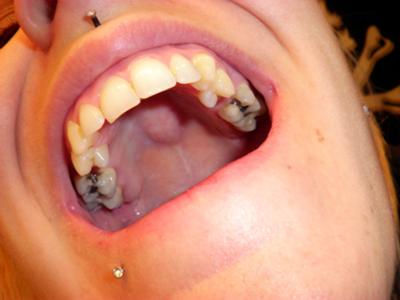Tooth Decay
One or two hours after brushing, bacteria and food particles start forming plaque on the surface of your teeth. These bacteria produce an acid that erodes the calcium in the tooth’s enamel and leads to the formation of minute cavities. If not treated, the acid will ultimately penetrate through the teeth enamel and cause quicker and devastating rot of the dentine layer.
Because the dentine is permeable, it rots much more rapidly than the overlaying enamel, thus permitting a large cavity to form inside the tooth without showing any visible signs.
As the decay continues, bacteria migrates through the permeable dentine and infects the pulp. When your body launches an immune response to the infection, the veins around the tooth enlarge and press against the nerves entering the tooth causing the tooth to ache.
If the infection proceeds, and a significant quantity of bacteria occupies the pulp, then the tooth and nerve may die. This will finally stop the discomfort , however, since the body is still fighting the infection, a pustule may form at the end of the root.
This infection will cause the tooth to ache constantly, and will be very painful when pressed against. If the pustule is not treated, it will destroy the bone around the tooth, and may well lead to the formation of a small fistula, or canal, through the bone and its overlying gum. Just before the fistula reaches the outer surface of the gum, a swelling, or boil may form. This could persist, or burst releasing foul tasting puss into the mouth.
Tooth decay usually doesn’t pose a very serious health issue if treated early ; however, if the rot is permitted to progress, the tooth will probably die, and the spreading infection may lead to general blood poisoning, fever, swelling in the neck and face, and a general sense of unwell.
Treatment?
Self-help : The best treatment is prevention. Through proper brushing, flossing, and regular dental visits, the prospects of major dental decay are significantly reduced. Sealants may also be used as a good preventative measure.
Professional help : In the early stages, a dentist can treat the tooth rot by cleaning and filling the cavity. More advanced tooth decay may require the dentist to perform a root canal therapy. If a pustule becomes untreatable by root canal therapy, an apicoectomy may also be required. This is a surgical procedure in which the infected tissue at the base of the root is removed. If the tooth and underlying bone is severely rotten, then the tooth may need to be removed.

